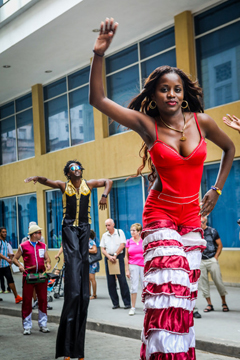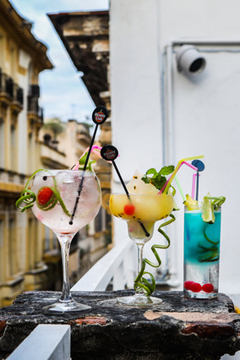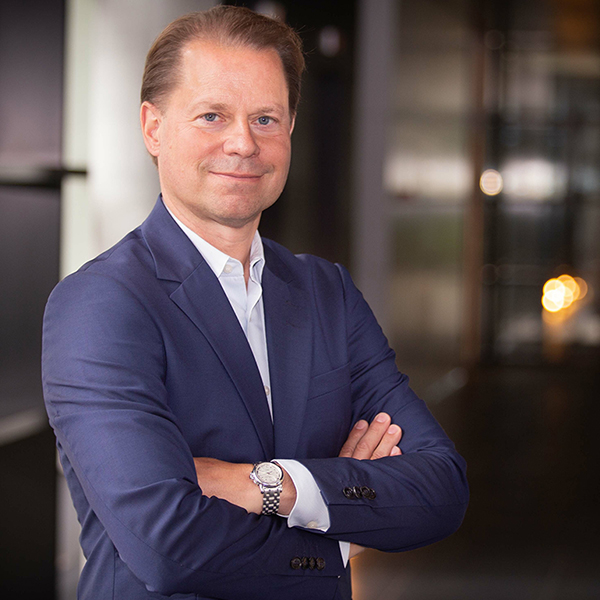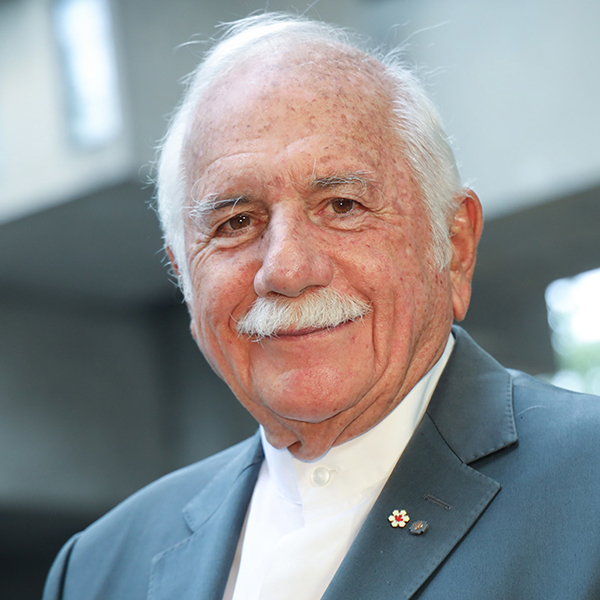Most visitors to Cuba rarely leave the sun-kissed beaches of their all-inclusive resorts, but Heidi Hollinger, BA’90, hopes to change that. The award-winning photographer and television host, who has been living part-time in Cuba for three years, recently published 300 Reasons to Love Havana, which is packed with gorgeous images and insider tips on everything from where to eat and drink, the best places to see eclectic architecture and fascinating people, and how to discover emerging artists and musical performers.

boasts exceptional examples
of art-nouveau architecture
Credit: Heidi Hollinger
Hollinger first visited Havana as a McGill student in 1989, and fell “hopelessly in love on the spot – hooked by its openhearted people and weathered beauty,” she writes.
Hollinger notes that her McGill degree in modern languages – she’s fluent in English, French, Russian, Finnish and Spanish – helped pave the way to an enviable career path that included 10 years living in Russia upon graduation, and then photographing international political figures such as Vladimir Putin, the Dalai Lama, Mikhail Gorbachev and Desmond Tutu.
“I couldn’t be happier that I chose the modern languages program, because it’s come in very handy,” says Hollinger, a former McGill Daily photo editor. “For example, I met Fidel Castro a couple of times, and was able to converse with him in Spanish, which was thrilling,” she says.
As host of the television series Ports d’attache/Waterfront Cities of the World – which airs in 40 languages in 110 countries – Hollinger spent four years travelling the globe. But Cuba was the country she kept returning to. So when a friend suggested she pitch journalist Marie-Joëlle Parent a book about Havana for Parent’s Trois cents raisons d’aimer series, Hollinger leapt at the chance to share her favourite ‘coups de coeur.’
“It was very easy to find 300 reasons to love Havana; I think this is one of the most exciting cities on earth, so I could’ve done 1,000 reasons,” says Hollinger. “This book took up every living moment for two years – I took 120,000 photos – and while it was an incredible project to do, it was excruciating.”
Researching the book from Cuba proved especially challenging – to get Internet access, she explains, she had to wait in line to purchase a one-hour Internet card, then sit in a sweltering public park until the card expired. Working from her home base in Montreal wasn’t much easier.

Credit: Heidi Hollinger
“Most of the places in my book are ones I’ve discovered – I couldn’t find any background information online, probably because Google – an American company – doesn’t have accurate geolocation or GPS … where you’ll see exactly where something is on the map. The information is often wrong,” says Hollinger, who covered much of Havana on her bike during her research. “Often, I’d call my friends in Cuba and ask, ‘Can you go down the street and tell me if the experimental gallery is on the northeast corner or the southwest corner?’ So it was really, really hard.”
Hollinger describes the Cuban capital as changing at an alarming rate while staying transfixed in time. With innovative bars and eateries cropping up in hidden neighbourhoods outside the much-visited Old Havana, she pegs the city as the next foodie destination – if only local bureaucrats could keep up.
“Because licenses are only issued in December, new restaurants are ready to go, but they’re not allowed to open yet,” she explains.
“Havana’s like a living, rolling museum; locals call it Detroit on wheels, because of all of the American cars that are here from the 1940s and 1950s. It’s incredible, because whereas there are a lot of new places to visit, no big buildings have been built here since the 1950s.”
When the U.S. relaxed its travel restrictions in 2016, tourists flocked to Cuba, but Hollinger notes that with the new administration, the number of American travellers has decreased.
“Donald Trump basically rolled back all of the progress that Barack Obama had made,” she explains.

Credit: Heidi Hollinger
Hollinger has truly become part of the Havana community; a portion of her book’s proceeds will help build a new playground in Unicorn Park in Jaimanitas, an impoverished fishing village on the outskirts of the city. Created by Cuban mosaic artist José Fuster and featured in Hollinger’s book, the park has been a 10-year labour of love for the artist and local residents.
“My son and his friends are also going to work on this project with me, which is cool,” says Hollinger.
Hollinger is such a fixture in the city that she is routinely recognized. Recently, two young women from Quebec approached her at a hotel rooftop bar.
“They said, ‘We read your book and we’re doing everything you recommend. We love it here so much,’” she recalls.
Another time, Hollinger was visiting 93-year-old Selene Gonce – “my adopted Cuban grandma” – who rents out rooms in her home to tourists.
“I stayed with Selene during every visit, for 22 years. At her home recently, the door opened and a couple walked in, looked at me and said, ‘Heidi! We bought your book, and now we’re staying with your grandma.’”
And that was Hollinger’s plan from the get-go: to get people as passionate about Havana as she is. Looks like it’s working.


